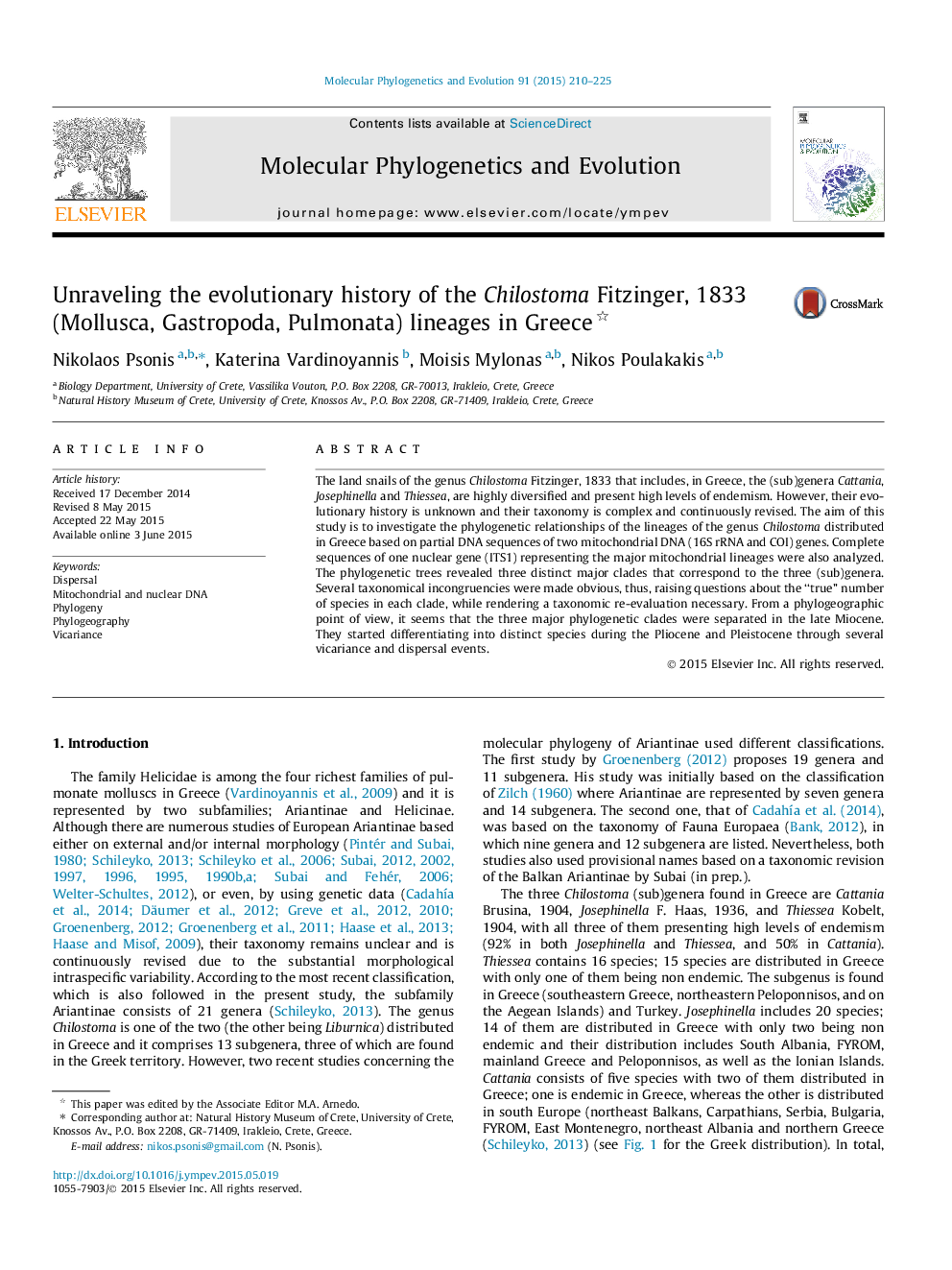| Article ID | Journal | Published Year | Pages | File Type |
|---|---|---|---|---|
| 2833790 | Molecular Phylogenetics and Evolution | 2015 | 16 Pages |
•No classification system reflects the systematics of Chilostoma lineages in Greece.•There is incongruence between morphology-based taxonomy and molecular phylogeny.•The diversification in the Greek area occurred during the Upper Miocene/Pliocene.•Vicariance and dispersal events influenced the Chilostoma differentiation in Greece.
The land snails of the genus Chilostoma Fitzinger, 1833 that includes, in Greece, the (sub)genera Cattania, Josephinella and Thiessea, are highly diversified and present high levels of endemism. However, their evolutionary history is unknown and their taxonomy is complex and continuously revised. The aim of this study is to investigate the phylogenetic relationships of the lineages of the genus Chilostoma distributed in Greece based on partial DNA sequences of two mitochondrial DNA (16S rRNA and COI) genes. Complete sequences of one nuclear gene (ITS1) representing the major mitochondrial lineages were also analyzed. The phylogenetic trees revealed three distinct major clades that correspond to the three (sub)genera. Several taxonomical incongruencies were made obvious, thus, raising questions about the “true” number of species in each clade, while rendering a taxonomic re-evaluation necessary. From a phylogeographic point of view, it seems that the three major phylogenetic clades were separated in the late Miocene. They started differentiating into distinct species during the Pliocene and Pleistocene through several vicariance and dispersal events.
Graphical abstractFigure optionsDownload full-size imageDownload as PowerPoint slide
